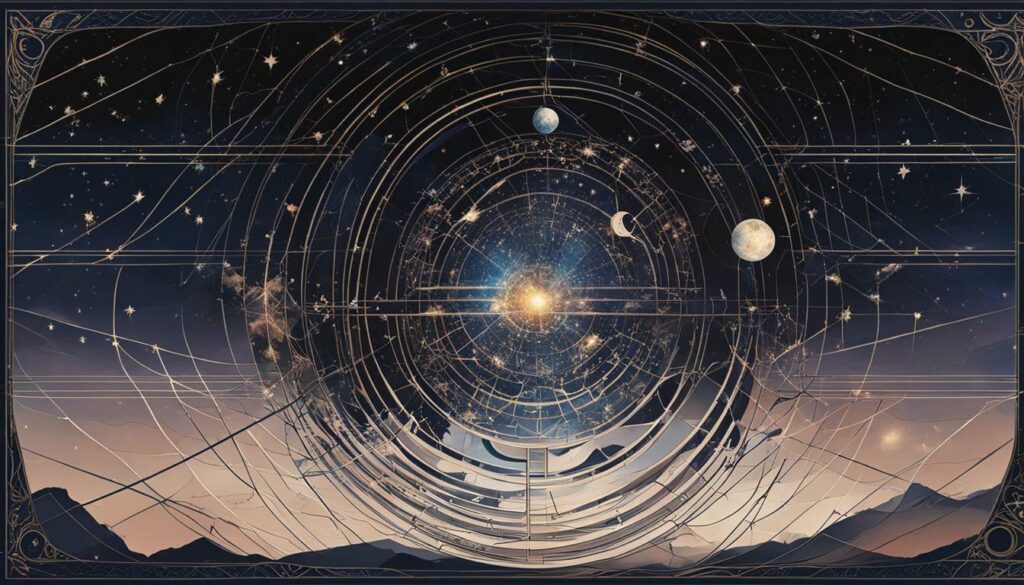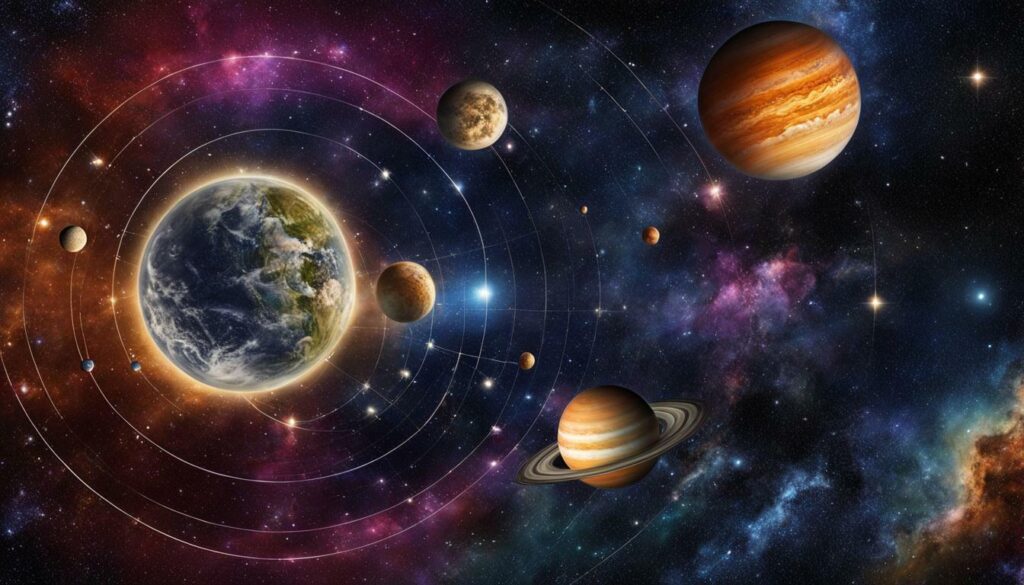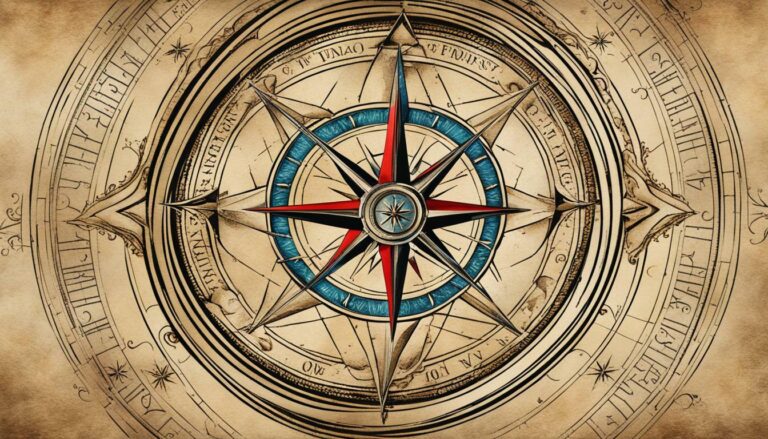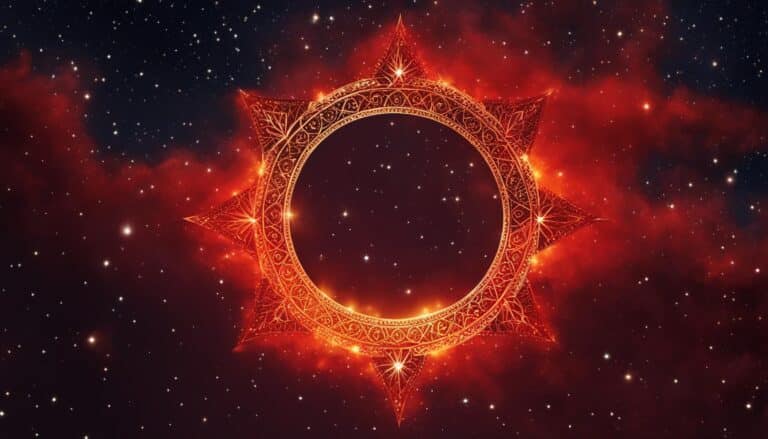What is a Cradle in Astrology Explained
Astrology offers various patterns and configurations that provide valuable insights into a person’s life, and one of these intriguing patterns is known as the cradle. A cradle in astrology refers to an aspect pattern that consists of two planets in opposition and two more in trine and sextile to the opposition planets. This unique configuration indicates a person’s creative abilities and their ability to maintain a positive outlook even in the face of conflict.
Key Takeaways:
- The cradle in astrology is a pattern consisting of two planets in opposition and two more in trine and sextile to the opposition planets.
- The cradle indicates creativity and the ability to stay positive in the midst of conflict.
- This pattern can also suggest a tendency towards escapism and a reluctance to confront real-life problems.
- Individuals with a cradle in their natal chart may struggle with maturation and find it difficult to face life’s challenges.
- However, working through the stress and conflict associated with the cradle can lead to impressive problem-solving skills and creative ability.
Understanding the Cradle Aspect Pattern
The cradle aspect pattern is formed through a particular arrangement of planetary aspects in an individual’s birth chart. This configuration consists of two planets in opposition, creating a sense of tension and conflict, and two additional planets in trine and sextile aspects to the opposition planets, bringing harmony and flow to the mix. The resulting shape resembles the cradle itself, hence the name.
With its unique combination of opposition and supportive aspects, the cradle aspect pattern carries significant implications for an individual’s astrological profile. It is often associated with heightened creativity, as the opposition provides the tension necessary for creative problem-solving, while the trine and sextile aspects offer a channel for expressing and manifesting that creativity.
However, the cradle aspect pattern can also have its challenges. Individuals with this configuration in their birth chart may tend to resort to escapism rather than facing real-life problems. This escapist tendency can hinder personal growth and emotional maturation, as the person may avoid confronting the challenges necessary for development.

On the other hand, working through the stress and conflict presented by the opposed planets can lead to remarkable growth and development. By embracing the tension and utilizing the supportive aspects, individuals with a cradle in their birth chart can tap into their creative potential and find innovative solutions to life’s challenges.
The cradle aspect pattern is also recognized in Huber astrology, where it holds its own significance and interpretations. The Huber method offers unique insights into the cradle aspect, expanding our understanding of this intriguing configuration.
The Significance of the Cradle Aspect
The cradle aspect holds significant symbolism and carries profound implications for an individual’s astrological profile. This unique configuration, consisting of two planets in opposition and two more in trine and sextile to the opposition planets, indicates a harmonious interplay between creativity and conflict. The cradle is like a cosmic puzzle, with each apex planet providing a potential outlet for creative problem-solving or escapism.
However, it’s important to note that the cradle aspect can also indicate a tendency towards escapism and a reluctance to face real-life problems. Individuals with a cradle in their natal chart may find it challenging to navigate the demands of adulthood and may struggle with emotional maturation. By avoiding confrontation and not fully facing life’s challenges, their personal growth and development may be delayed.
On the flip side, embracing the stress and conflict associated with the opposed planets in the cradle can lead to transformative growth and impressive creative abilities. By actively working through the oppositions and delving into the deeper meaning behind the cradle aspect, individuals can unlock their full astrological potential and harness the power of their unique configuration.
The Benefits and Challenges of the Cradle Aspect
- The cradle aspect symbolizes a strong potential for creativity and problem-solving.
- Individuals with a cradle in their chart may possess a positive outlook even in the face of conflict.
- However, there is a risk of escapist tendencies and an aversion to dealing with real-life issues.
- People with a cradle configuration may struggle with emotional maturation and finding their place in the world.
- Working through the stress and conflict of the cradle can lead to personal growth and enhanced emotional development.

Understanding the cradle aspect in astrology provides valuable insights into an individual’s personality traits and life experiences. It is a complex configuration that requires careful analysis and interpretation to fully comprehend its effects. By exploring the deeper symbolism and implications of the cradle aspect, individuals can gain a deeper understanding of themselves and utilize this knowledge to navigate their path towards personal growth and fulfillment.
Interpreting the cradle aspect in astrology requires a comprehensive understanding of its various components and their implications. The cradle is formed by two planets in opposition and two more in trine and sextile to the opposition planets, creating a unique configuration in the birth chart. This aspect pattern indicates a combination of creativity, positive outlook, and potential for problem-solving skills. However, it can also suggest a tendency towards escapism and a reluctance to confront real-life issues.
Within the cradle aspect, each apex planet offers a potential outlet for creative problem-solving or escapism. The opposition planets create a dynamic tension that, when embraced and worked through, can lead to constructive solutions and impressive creative abilities. On the other hand, if the individual avoids facing the challenges posed by the opposition planets, it may hinder their emotional development and make it harder to navigate the complexities of adulthood.
To interpret the cradle aspect effectively, it is important to consider the specific planets involved and their placements in the birth chart. Analyzing the house positions and aspects of the apex planets can provide additional insights into the individual’s character and life experiences. By understanding the nuances of the cradle aspect, we can unlock its valuable insights and offer guidance for personal growth and development.
In summary, the cradle aspect in astrology symbolizes a unique combination of creativity, conflict, and potential for personal growth. Understanding its implications requires a thorough analysis of the component planets, their placements, and the dynamics between them. By embracing the challenges and opportunities presented by the cradle, individuals can harness its power for creative problem-solving and emotional development.

- The cradle aspect in astrology consists of two planets in opposition and two more in trine and sextile aspects.
- It signifies a unique combination of creativity, conflict, and potential for problem-solving skills.
- Interpreting the cradle aspect requires a comprehensive understanding of the specific planets involved and their placements in the birth chart.
- Embracing the challenges posed by the cradle aspect can lead to constructive problem-solving and personal growth.
Creativity and Conflict in the Cradle Aspect
The cradle aspect combines creativity and conflict, leading to a unique interplay within an individual’s astrological chart. This configuration, characterized by opposing planets and trine and sextile aspects, offers a dynamic framework for problem-solving and self-expression. The cradle aspect formation can be likened to two interlocking wedges, with each apex planet providing an outlet for creative solutions or potential escapism.
However, it is important to note that the cradle can also signify a tendency to avoid confronting real-life issues. This escapist tendency may manifest in different ways, such as seeking solace in fantasy or retreating from conflict. The person with a cradle aspect in their natal chart may struggle with maturation and find it challenging to navigate the responsibilities of adulthood.
On the positive side, working through the stress and conflict of the opposing planets can lead to constructive problem-solving and the development of impressive creative abilities. The cradle aspect nurtures a unique blend of imagination and resilience, allowing individuals to find innovative solutions to challenges. When harnessed effectively, the cradle aspect can inspire individuals to approach conflicts with a positive and creative mindset, enabling personal growth and self-discovery.

Emotional Development and the Cradle Aspect
The cradle aspect can have a significant influence on an individual’s emotional development and ability to mature. With its unique configuration of opposition, trine, and sextile aspects, the cradle offers both challenges and opportunities for personal growth.
Individuals with a cradle in their natal chart may struggle with the process of maturation and find it difficult to navigate the ups and downs of adult life. This is because the cradle aspect tends to amplify the emotional energy, creating internal conflicts and a heightened sensitivity to emotional experiences.
On one hand, the cradle aspect provides individuals with a rich source of creativity and problem-solving abilities. By channeling their emotions and utilizing the positive aspects of the cradle, individuals can develop unique strategies for overcoming challenges and finding innovative solutions. However, the cradle can also lead to escapism and a reluctance to confront real-life issues.
By embracing the potential lessons and opportunities presented by the cradle aspect, individuals can work through the stress and conflict associated with this configuration. This emotional growth can lead to a better understanding of oneself and a greater capacity to handle life’s challenges. It is through this process that individuals with a cradle in their natal chart can develop their emotional maturity and fully embrace their astrological potential.

The cradle aspect holds particular significance in Huber astrology, offering additional insights into its meaning and implications. In this approach, the cradle configuration is seen as a powerful symbol representing the potential for personal growth and transformation. With its combination of opposition, trine, and sextile aspects, the cradle in Huber astrology highlights the harmonious interplay between conflicting forces, fostering a unique sense of balance and creativity.
One key aspect of the cradle in Huber astrology is its emphasis on the apex planets. These planets play a crucial role in channeling the energy of the opposing planets and shaping the individual’s experiences and responses. By analyzing the specific placements and aspects of the apex planets, Huber astrologers gain deeper insights into the individual’s unique talents, challenges, and potential for personal development.
Benefits of Cradle Interpretation in Huber Astrology:
- Enhanced self-awareness: The cradle aspect in Huber astrology provides individuals with a clearer understanding of their emotional and creative tendencies. By recognizing and harnessing the potential of the cradle, individuals can tap into their innate abilities and navigate challenges more effectively.
- Improved problem-solving: The harmonious aspects within the cradle configuration in Huber astrology foster a balanced approach to conflict and problem-solving. Individuals with a cradle formation are often gifted with the ability to find creative solutions and maintain a positive outlook, even in challenging situations.
- Greater personal growth: The cradle aspect in Huber astrology signifies a unique opportunity for personal growth and maturation. By embracing the tensions and challenges of the opposing energies, individuals can cultivate emotional resilience and develop a deeper understanding of themselves and their life path.
Understanding the cradle in Huber astrology allows individuals to harness its transformative power and unlock their full potential. By embracing the balanced interplay of opposing forces and tapping into their creative problem-solving abilities, individuals with a cradle formation can navigate life’s challenges with grace and achieve personal growth and fulfillment.

Harnessing the power of the cradle aspect in astrology involves recognizing and utilizing its unique strengths and abilities. The cradle aspect pattern, consisting of two planets in opposition and two more in trine and sextile to the opposition planets, signifies creativity and the ability to maintain a positive outlook even in the face of conflict.
When interpreting a cradle in someone’s birth chart, it is important to consider the potential outlets for creative problem-solving or escapism that are provided by the apex planets. By engaging with these aspects and finding constructive ways to channel their energy, individuals with a cradle configuration can unlock their full astrological potential.
- Embrace creativity: The cradle aspect is closely linked to creative abilities. Individuals with a cradle in their chart often possess a unique flair for thinking outside the box and finding innovative solutions to challenges. By tapping into this creativity, they can harness their artistic talents or develop their problem-solving skills.
- Face real-life issues: While the cradle may provide an escape from reality, it is important to confront real-life issues and not shy away from challenges. By acknowledging and addressing these struggles head-on, individuals can grow emotionally and develop a deeper understanding of themselves.
- Cultivate resilience: The cradle aspect can test one’s ability to stay positive in the face of conflict. By cultivating resilience and maintaining a hopeful attitude, individuals can navigate through difficult situations and emerge stronger and more resilient.
By actively harnessing the power of the cradle aspect, individuals can tap into their creative potential, confront challenges with resilience, and foster personal growth. Understanding the nuances of this configuration and working with it in a constructive manner can lead to a more fulfilling and empowered life.

The cradle aspect in astrology offers a fascinating perspective on an individual’s life, highlighting the interplay between creativity, conflict, and emotional development. This aspect pattern, formed by two planets in opposition and two more in trine and sextile to the opposition planets, provides valuable insights into an individual’s astrological profile.
Individuals with a cradle in their natal chart possess a unique ability to harness their creative problem-solving skills, finding innovative solutions even in the face of conflict. The opposition planets create a tension that can be channeled into constructive problem-solving and impressive creative abilities. However, it is important to note that the cradle can also indicate a tendency towards escapism and a reluctance to confront real-life issues.
Emotional development can be both a strength and a challenge for individuals with a cradle in their chart. By working through the stress and conflict associated with the opposed planets, individuals can experience growth and personal development. However, those who struggle to face life’s challenges head-on may find it more difficult to mature emotionally.
It is worth mentioning that the cradle is also referred to as a cradle in Huber astrology, where it is analyzed and interpreted through a unique lens. Understanding this aspect in Huber astrology can provide additional insights and perspectives on its meaning and implications.
Unlocking Your Astrological Potential
In conclusion, the cradle aspect in astrology offers a dynamic framework for understanding an individual’s strengths, challenges, and potential. By embracing the inherent creativity and problem-solving abilities associated with the cradle, individuals can unlock their full astrological potential and navigate life’s complexities with resilience and ingenuity.
Whether you have a cradle in your natal chart or are interested in learning more about this fascinating aspect pattern, exploring the significance of the cradle in astrology can provide valuable insights into your own astrological profile and enhance personal growth and development.
Remember, astrology is just one tool for self-discovery and understanding. While the cradle aspect can offer valuable insights, it is always important to approach astrology with an open mind and use this knowledge as a guide on your personal journey.
FAQ
Q: What is a Cradle in astrology?
A: A Cradle in astrology is an aspect pattern consisting of two planets in opposition and two more in trine and sextile to the opposition planets. This configuration indicates creativity and the ability to stay positive in the face of conflict.
Q: What is the meaning of a Cradle aspect in astrology?
A: The Cradle aspect in astrology suggests a potential outlet for creative problem-solving or escapism. It can indicate an escapist tendency and a reluctance to face real problems. However, working through the stress and conflict of the opposed planets can lead to impressive creative ability and constructive problem-solving.
Q: How does a Cradle aspect affect emotional development?
A: Individuals with a Cradle in their natal chart may struggle with maturation and find it difficult to “grow up.” By not fully facing life’s challenges, they may be slower to develop emotionally. However, by working through the stress and conflict associated with the Cradle, they can experience emotional growth and personal development.
Q: How can the power of the Cradle aspect be harnessed?
A: To harness the power of the Cradle aspect, individuals can embrace their unique strengths and abilities associated with this configuration. This includes using creative problem-solving skills and maintaining a positive outlook in the face of conflict. By understanding and leveraging the potential of the Cradle, individuals can enhance their personal growth and development.
Q: What is the significance of the Cradle aspect in astrology?
A: The Cradle aspect in astrology holds significant implications for an individual’s personality traits and life experiences. It symbolizes a dynamic relationship between creativity and conflict. While it can indicate a tendency towards escapism, it also provides an opportunity for impressive creativity and constructive problem-solving.
Q: How can the Cradle aspect be interpreted in astrology?
A: The interpretation of the Cradle aspect in astrology involves analyzing the specific planets involved and their positions in the birth chart. It requires considering the interplay of opposition, trine, and sextile aspects. By understanding the nuances of interpreting the Cradle, valuable insights can be gained into its effects on an individual’s life.
Q: What is the Cradle aspect in Huber astrology?
A: In Huber astrology, the Cradle aspect is interpreted and analyzed using the Huber method. This approach offers unique perspectives and insights into the configuration. Exploring the Cradle in Huber astrology can expand our understanding of its significance and implications.







